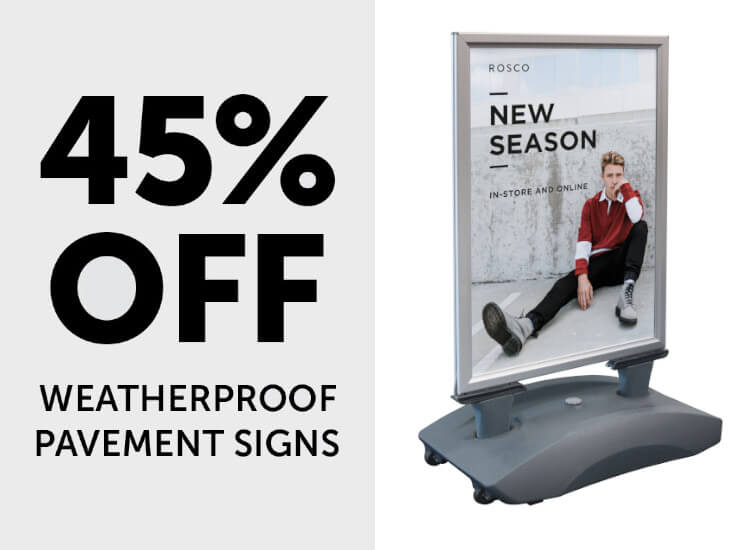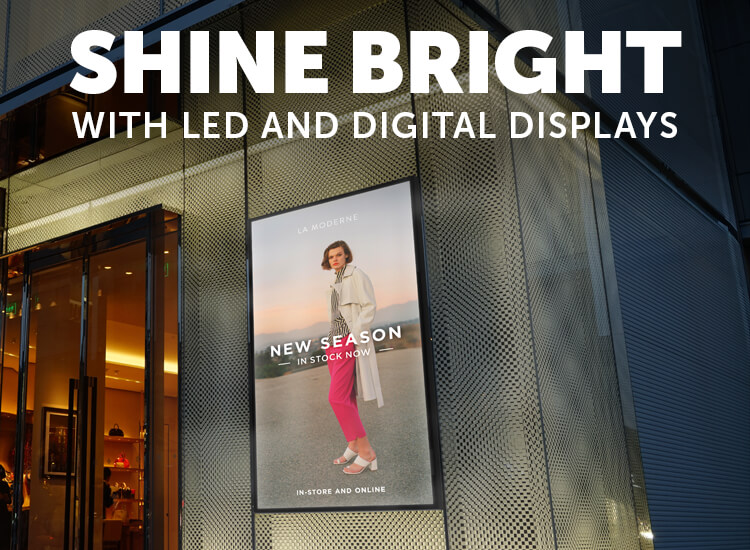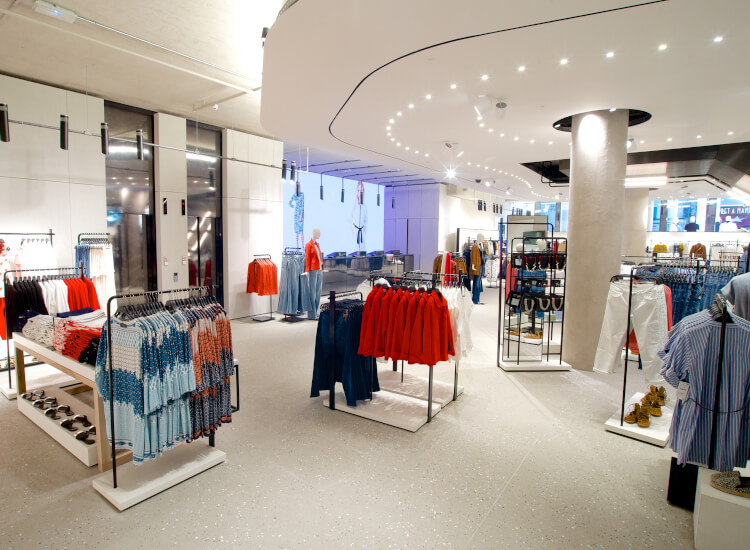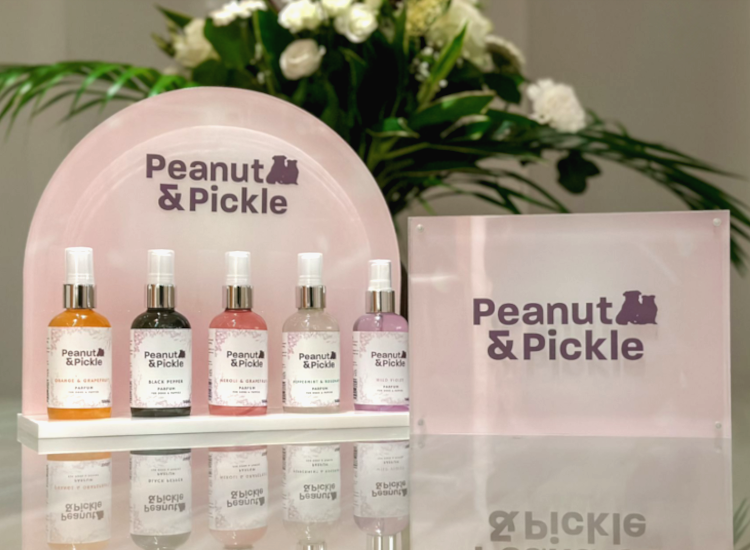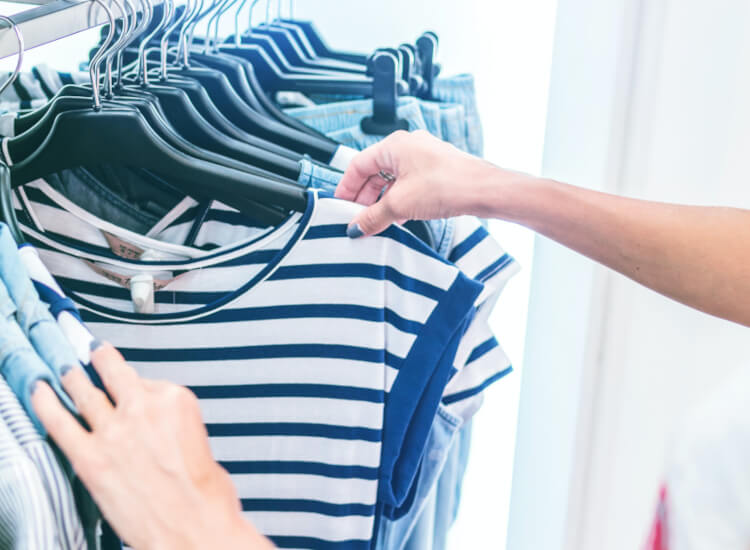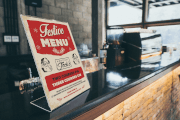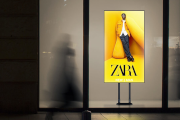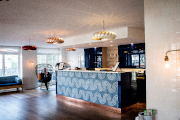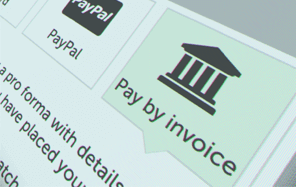What Is Price Image? How Does It Affect Brand Image?
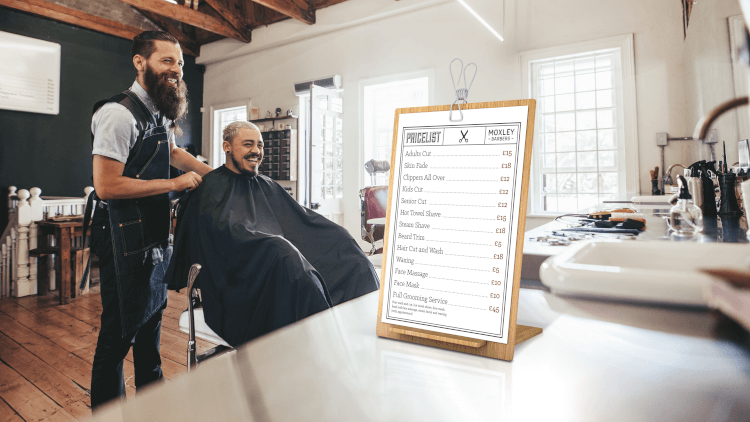
Customer perception of your brand comprises many factors, including store layout, colour schemes, website design, shopping experience, customer service and, yes, your prices. Price image is often the biggest barrier for customers, and that applies to both ends of the pricing spectrum. In times when both business and personal finances are under strain, it is important to align yourself with your customers' price expectations where possible.
What is price image?
Price image refers to consumers' perception of your prices, relative to your competition and the market. This image may not actually be based on the reality of your prices, but instead the psychological reaction to them in the minds of potential customers.
“consumers with limited price knowledge might be able to form an expectation of the general price level of a retailer solely on the basis of environmental cues, even before examining price tags”- Hamilton & Chernev, Journal of Marketing [1]
If customers perceive your prices as being too high, they may not even consider entering your store or going to your website as they believe they will not be able to afford the products. Conversely, if your prices are too low, many customers may perceive your products or service as being of low quality, and therefore opt to pay more elsewhere to receive a better experience. Price image contributes to your overall brand image, which determines your success as a business.
How important is brand image?
Brand image is key to sustaining a successful business. Loyal repeat customers don’t just buy a product or service solely based on the function of that purchase. They are often also buying into your company’s ethos, shopping experience and unique selling points that set you apart from close competitors. Everything your brand does publicly contributes to your brand image, including social media activity, customer service, store layout and price.
Brand image and pricing strategy go hand in hand. If you have a premium pricing structure, combined with an exceptional in-store experience, then your customer base will perceive your brand as luxurious and high quality. Having a positive price image is especially important for supermarkets as they usually offer a large range of products, making for a more time-consuming shopping experience. The large number of items being purchased at one time makes identifying and comparing individual prices more difficult, so the overall price image of the supermarket is more relevant to customers [2].
How to develop a pricing strategy that suits your brand
So we have now explored how your price is perceived by potential customers. But how can you start pricing your products or services in a way that is profitable and competitive, but also contributes to a positive brand image? You need to take the following aspects of your business into account.

Customer demographics
You need to know who your target market is setting prices. Wealthy customers will likely be willing to pay more for a high-quality product or service, but less-well-off customers may be happy to accept a worse service or lower quality item if they can pay less for it.
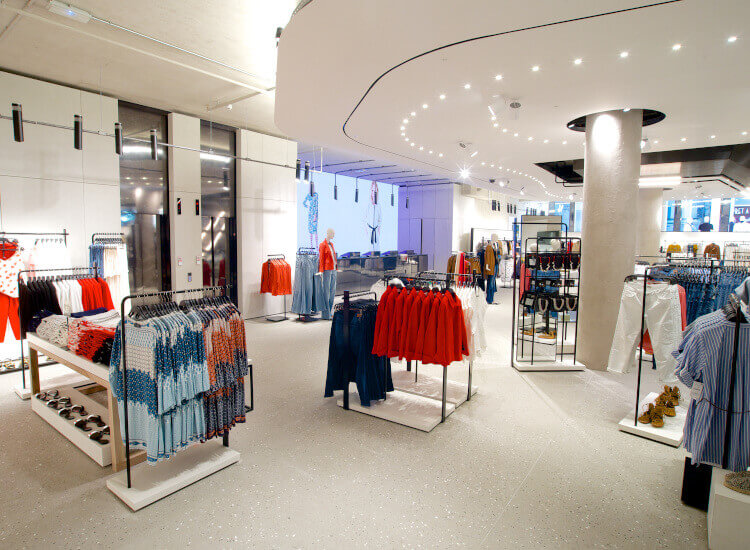
Store layout
The layout of your store can have an influence on your price image. Large, messy stores may be perceived as disorganised and therefore offering cheaper products, while small, minimalist boutiques will be perceived as exclusive and therefore more expensive.

Level of service
How much time does your store take to provide customers with advice, offers and loyalty schemes? If you spend a lot of time and money on improving the customer experience, then your customers are more likely to accept paying higher prices to receive it.
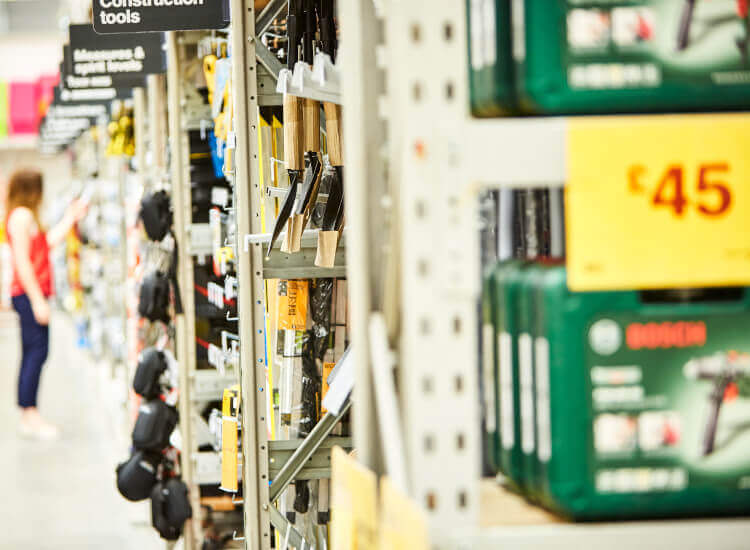
Business costs
You need to make sure that all of your business costs are accounted for, while also making a profit. Consider both the cost of manufacturing a product and the costs of the packaging, shipping, production time and staff wages.
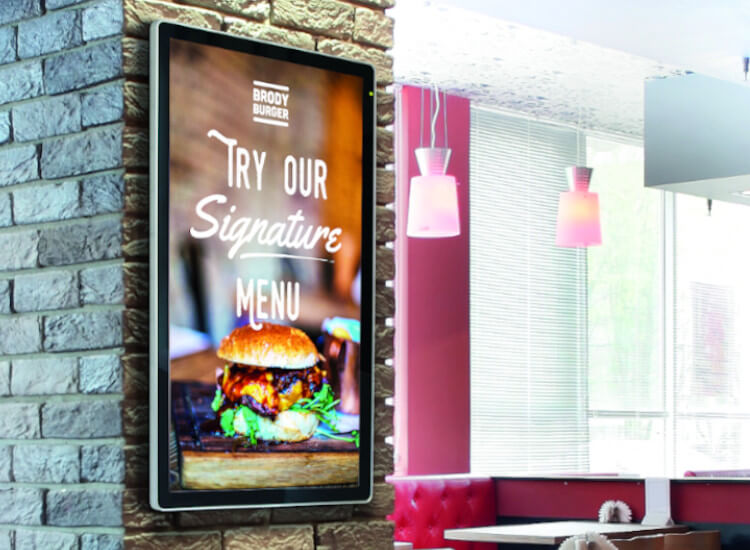
Focus on key items
Customers may make their assumptions about your prices based on just a few key items. You may be able to offer competitive pricing on these items to attract new, bargain-hunting customers while keeping prices higher across the rest of your range.
Point of sale materials to influence your price image
Whether you want to be seen as a high-end retailer, a budget discounter, or somewhere in between - we have the perfect POS signage for you.
Sale inserts
Bright red sale signs offer a surefire way to let people know that your business is cutting prices. When used sparingly, they can indicate that luxury, top-end retailers are having a sale for a limited time only. When they are used in all areas of the shop, this indicates that you are a discounter and have low prices all year round.
If you are aiming to present your brand as an average high street store, then using sale signage in a section at the back of your store, alongside window signage, can help you find the perfect balance for your price image.
-

A1 Sale Poster
STCSP In stock£4.62 ex. VATView -

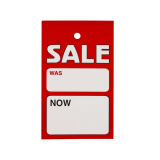
Was and Now Sale Hanger Tickets x 100
STCWN In stockFrom: £5.90 ex. VATView -

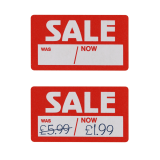
Was and Now Price Stickers Landscape x 500
STCLL In stockFrom: £7.25 ex. VATView -

Sale Arrow Hanging Sign
STCHS In stockFrom: £6.80 ex. VATView
Shelf data strips, talkers and wobblers
Strips, talkers and wobblers are point of sale materials that sit on or below your shelf edge to display prices and promotions. They are commonly seen in supermarkets or large shops where long shelving units need to be broken up with signage to help customers find what they are looking for.
Talkers and wobblers stick out from the shelf edge to attract attention to special offers and sales. You could create an inexpensive price image if you use these types of signs a lot in your stores, which is ideal for budget discounters. Shelf data strips are more subtle and are usually used to display prices in mid-range high street stores.
-
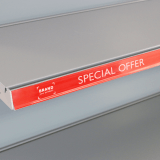
Bespoke Printed Shelf Edge Infill Strips
INF In stockFrom: £1.89 ex. VATView -
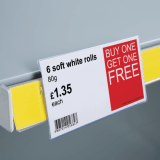
Universal Central Fitting Shelf Talker
PB14 In stockFrom: £0.24 ex. VATView -


Shelf Wobbler Strips x 100
WB1 In stockFrom: £3.25 ex. VATView -

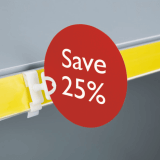
Flexible Promotional Shelf Sign Holders x 100
BS3 In stockFrom: £5.90 ex. VATView
Price tags and flexible wallets
The type of tag you use can have a big influence on your brand’s price image. Rustic paper or cardboard tags, such as our Manilla tags, can emit a sense of luxury, while plastic price tags and stickers are seen as the low-budget standard on the high street, especially when combined with other signage.
Flexible wallets are often used as price tags for big-ticket items, such as household appliances and furniture. Their larger format also makes them great for displaying important product information, such as specifications, related products and competitor prices.
As a general rule, your price image is seen as more expensive when you use less signage to advertise your prices. Low-budget discounters will typically use a lot of their shelf and aisle space advertising their low prices to encourage more high-volume sales, while high-end retailers tend to focus on aspirational imagery to sell their products or service.
-

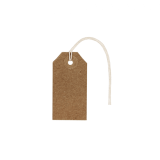
Strung Manilla Tags x 1000
MBT In stockFrom: £19.80 ex. VATView -

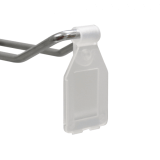
Clear Swing Tags x 100
ST3 In stockFrom: £4.20 ex. VATView -

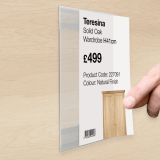
Adhesive Ticket Holder
PS4 In stockFrom: £0.44 ex. VATView -
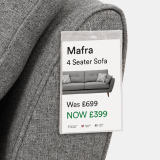
PVC Wallet with Welded Hole
FW2 In stockFrom: £0.12 ex. VATView
Acrylic blocks
If you want to create a luxury point of sale display, then you can't go wrong with an acrylic magnetic photo block. They can be used to display high-resolution graphics, poster inserts or simple messages to complement your key items. They are simple, classy and can be used in both portrait and landscape orientations to suit the environment.
-
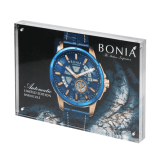
Magnetic Photo Block
AD7 In stockFrom: £3.54 ex. VATView -



Magnetic Wooden Photo Blocks with Acrylic
ADB In stockWas: £10.96 £8.99 ex. VATView -

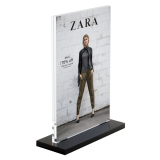
Counter Standing Acrylic Block Sign Holder
ADF In stockWas: £11.44 From: £7.56 ex. VATView -
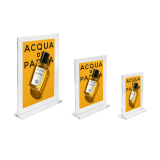
Magnetic Clear Acrylic Block Sign Holder
AD13 In stockFrom: £7.59 ex. VATView
If you’ve enjoyed this guide, you may also like our guides to customer personas and creating a luxury shopping experience.
Which business type are you?↗
See our sector specific help and advice, and our Specially Selected product ranges, ideal for your business.
References
1. Ryan Hamilton and Alexander Chernev, ‘Low Prices Are Just The Beginning: Price Image In Retail Management’, Journal of Marketing (November 2013), Vol. 77, p2.
2.Stephan Zielke, ‘Effects of Price image dimensions on consumer buy intention’, European Journal of Marketing (June 2010), Vo. 44, No.6, p756.

